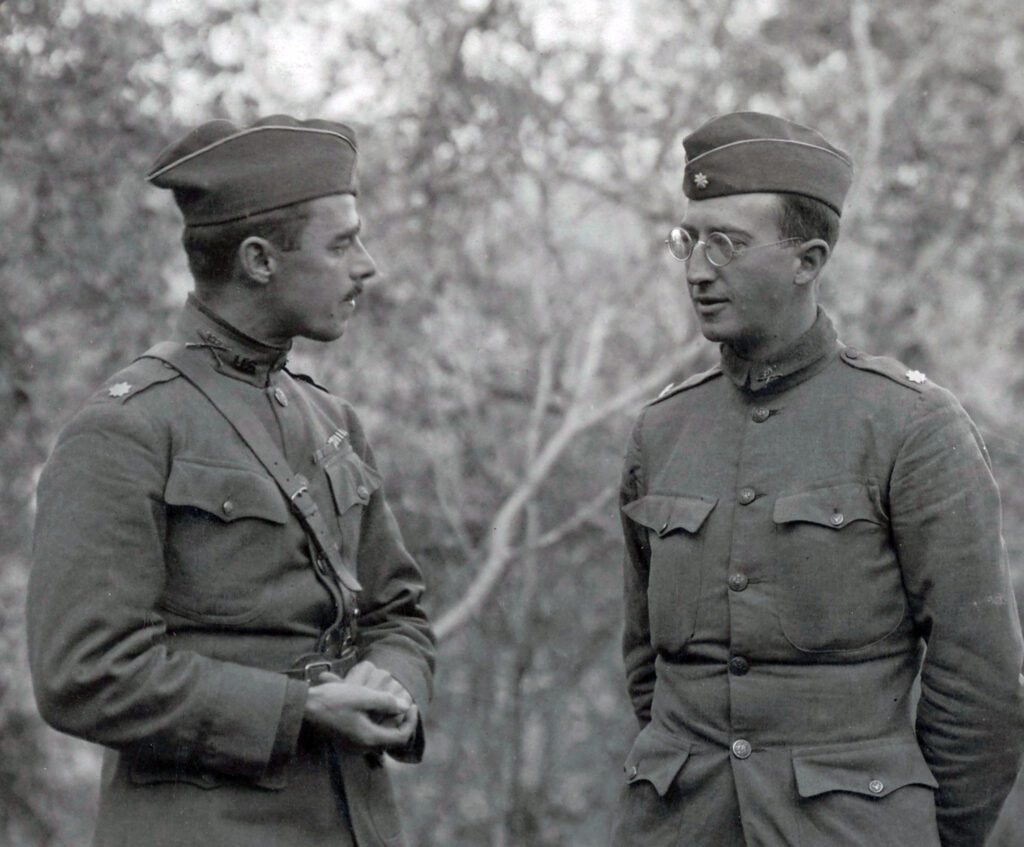The Meuse-Argonne Offensive was the final push of World War I on the Western Front, lasting from Sept. 28, 1918, until the end of the war, Nov. 11, 1918. The allied forces of Britain, France, and the United States advanced all along the front, making the largest offensive in U.S. military history, involving more than 1.2 million troops. It was also the deadliest, inflicting 350,000 casualties in less than seven weeks. The allies made relatively major gains, considering the course of the war until that point, but it was not without errors – and one of those errors meant the loss of a battalion-sized force.
The Meuse-Argonne Offensive: Advance into Argonne Forest
The men of that battalion came from the 77th Division, made up mostly of men from New York City. During the allied push, they fought their way into the dense Argonne Forest, where a counterattack soon left them surrounded and cut off from friendly lines. Thinking the unit had been lost, allied artillery shelled their position while German troops repeatedly attacked them from all sides. When word finally got to the allied command, an entire division was sent to relieve them – but would they make it in time?

When the Meuse-Argonne Offensive launched, officers in the Argonne Forest region were given specific orders that no one was allowed to fall back for any reason. The 77th Division launched its thrust into the forest with the French on their left flank and two American units on their right. The Germans had held the area since the beginning of the war and were well entrenched. Deep trenches, barbed wire, interlocking machine guns, and pre-sighted artillery awaited any attacker who dared to make the one-mile march across no-man’s land in the Argonne.
The Meuse-Argonne Offensive: The Lost Battalion’s Struggle
By the morning of Oct. 2, the 77th had progressed through all of its initial four objectives. Their next objective was to capture Hill 198, which would allow them to flank the German defenders in the forest. Soldiers reconnoitering the hill found a way to get up to it along its right side. As they crested the top of the hill, they had no idea the Germans had already pushed back both of their flanks. Some 545 men from various units within the 77th with Maj. Whittlesey, in command, was now surrounded and cut off. Whittlesey only realized it when he could no longer hear anyone around them.

The 77th began to dig in, with the hill next to them and the ravine below them occupied by the enemy. That same afternoon, the Germans attacked them from all sides of the hill. Mortars, grenades, and snipers tried to dislodge the Americans, but Whittlesey stayed put. He sent out runners to make contact with French or American units, but no one ever returned. The only consolation was that the Germans took as many casualties as they did. As if that wasn’t bad enough, they were taking artillery fire from their own side.
Meuse-Argonne Offensive: Rescuing the Lost Battalion
Whittlesey had no idea if anyone back at headquarters even knew if they were missing. Low on food and ammunition, he sent his last carrier pigeon in a desperate attempt to get help. Luckily, that pigeon was Cher Ami, now famous for carrying the major’s message. The bird was shot down twice but managed to fly back to headquarters 25 miles away with the message: “We are along the road parallel to 276.4. Our own artillery is dropping a barrage directly on us. For heaven’s sake, stop it.” Cher Ami arrived having been shot through the breast, blinded in one eye, and with a leg hanging only by a tendon.
But when the allied shelling finally stopped, the Germans attacked yet again, this time reaching close enough to fight in hand-to-hand combat. Again, the 77th fought them off. For the next three days, the two sides fought over the hill. Back at the front, the main body of the 77th launched a series of attacks to get to the Lost Battalion, but all failed.

When news of the situation reached the American Expeditionary Force headquarters, Gen. John J. Pershing sent the 28th Infantry Division, reinforced by the 82nd Infantry Division and the 1st Infantry Division, all under the command of Gen. Hunter Liggett, to relieve them.
The Germans saw the forces being arrayed against them, so they reinforced their own lines and sent flamethrower troops to Hill 198 to dislodge Whittlesey. Not only did the powerful American army begin to move the line, the Lost Battalion also held out. Whittlesey sent out Pvt. Abraham Krotoshinsky was to lead advancing friendly forces in the beleaguered unit. On Oct. 8, 1918, they finally arrived. Only 194 members of the Lost Battalion avoided becoming casualties on the hill.
Whittlesey was promoted to Lieutenant Colonel and received the Medal of Honor, along with six others. Private Krotoshinsky and 30 others would receive the Distinguished Service Cross.
Read About Other Military Myths and Legends
If you enjoyed learning about Pershing and pig’s blood bullets, we invite you to read about other military myths and legends on our blog. You will also find military book reviews, veterans’ service reflections, famous military units and more on the TogetherWeServed.com blog. If you are a veteran, find your military buddies, view historic boot camp photos, build a printable military service plaque, and more on TogetherWeServed.com today.

Great story, but author neglected that the Germans also used mustard gas, my grandfather also survived the war, encountering mustard gas, plus the horrors encountered by the Germans.